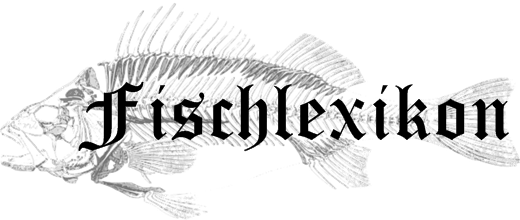Hidonde: Mondaugen; en: Mooneyes; es: Peces Ojos de luna
Bilder, Beschreibung und Artenverzeichnis |  |
Hilsa keleede: Kelee-Alse; en: Kelee shad; pt: Pala chata |  |
Himantura Müller & Henle 1837Gattung in der Familie Dasyatidae (Stechrochen), Unterfamilie Urogymninae. Artenverzeichnis anzeigen
- Himantura alcockii (Annandale 1909), Synonym für Maculabatis gerrardi (Gray 1851)
- Himantura australis Last, White & Naylor 2016; en: Australian whipray; Vorkommen: Südostindischer Ozean, südwestlicher Pazifik, Papua-Neuguinea, Westaustralien und Queensland (Australien); Leb ensraum: Brack- und Salzwasser;
- Himantura fai, valid als Pateobatis fai (Jordan & Seale 1906)
- Himantura draco Compagno & Heemstra 1984, Synonym für Pateobatis jenkinsii (Annandale 1909)
- Himantura fava (Annandale 1909); en: Honeycombwhipray, Ocellate whipray; Vorkommen: Indien, Indonesien und Golf von Thailand;
- Himantura granulata, valid als Urogymnus granulatus (Macleay 1883)
- Himantura fluviatilis (Hamilton 1822), Synonym of Pastinachus sephen (Fabricius 1775);
- Himantura leoparda Manjaji-Matsumoto & Last 2008; en: Leopard whipray; Vorkommen: Rotes Meer, Indo-West-Pazifik, Südafrika, Ostafrika, Golf von Aden und Persischer Golf östlich bis Philippinen und Neuguinea, nördlich bis Ryukyu-Inseln, südlich bis Nordaustralien, östliches Mittelmeer (eingewandert aus dem Roten Meer); Lebensraum: Salzwasser;
- Himantura marginata (Blyth 1860); en: Blackedge whipray; Vorkommen: Indischer Ozean, möglicherweise westlicher Pazifik; Lebensraum: Brack- und Salzwasser;
- Himantura uarnak (Gmelin 1789); de: Indo-Australischer Tüpfelrochen; en: Honeycomb stingray; pt: Uge-marmoreada; Vorkommen: Rotes Meer, Indo-Westpazifik, Ostafrika und Eastern Cape Province (Südafrika), Persischer Golf, Sokotra (Jemen), Seychellen, Madagaskar und Mauritius (Mascarenen) östlich bis Philippinen, im Mittelmeer eingewandert aus dem Roten Meer; Lebensraum: Süß-, Brack- und Salzwasser;
- Himantura undulata (Bleeker 1852); de: Leoparden-Stechrochen; en: Leopard whipray; pt: Uge-leopardo; Vorkommen: Indo-West-Pazifik, Indien, Bangladesch und Sri Lanka östlich bis Java (Indonesien) und Borneo; Lebensraum: Salzwasser.
Quellen: Eschmeyer's Catalog of Fishes Classification, Stand 9. November 2021 - FishBase |  |
Hippoglossoides Gottsche 1835Gattung in der Familie Pleuronectidae (Schollen), Unterfamilie Pleuronectinae; Lebensraum Meer. Artenverzeichnis anzeigen
- Hippoglossoides dubius Schmidt 1904; en: Flathead flounder; Vorkommen: Nord-West-Pazifik (Japanisches Meer und Ochotskisches Meer, Kamtschatka und Korea); max. Länge in cm: 45 SL;
- Hippoglossoides elassodon Jordan & Gilbert 1880; en: Flathead sole; fr: Balai du Japon; es: Platija japonesa; pt: Solha-japonesa; Vorkommen: Nord-Pazifik und angrenzende arktische Region; max. Länge in cm: 52 SL;
- Hippoglossoides platessoides (Fabricius 1780); de: Doggerscharbe; en: American plaice; pt: Solha-americana; Vorkommen: Arktischer Ozean und Nordatlantik; max. Länge in cm: 82,6 TL;
- Hippoglossoides robustus Gill & Townsend 1897; Vorkommen: Nord-Pazifik und arktischer Ozean (Hokkaido, Japan und das Ochotskische Meer nördlich bis nordöstlich von Cape Lisburne, südlich bis nordwestlich von Akutan Island, Aleutenkette, Alaska, arktisches Kanada); max. Länge in cm: 30 TL.
Quellen: Eschmeyer's Catalog of Fishes Classification, Stand 4. Januar 2022 - FishBase |  |
Hippoglossus Cuvier 1816Gattung in der Familie Pleuronectidae (Schollen), Unterfamilie Hippoglossinae; Lebensraum: Meer. Artenverzeichnis anzeigen
- Hippoglossus hippoglossus (Linnaeus 1758); de: Heilbutt, Weißer Heilbutt; en: Atlantic halibut; es: Fletán del Atlántico; pt: Alabote-do-Atlântico; Vorkommen: Nordatlantik und angrenzender Arktischer Ozean, südlich bis zur Nordsee;
- Hippoglossus stenolepis Schmidt 1904; de: Pazifischer Heilbutt; en: Pacific halibut; fr: Flétan de l'Atlantique; pt: Alabote-do-Pacífico; Vorkommen: Nordpazifik und angrenzende Arktis;
Quellen: Eschmeyer's Catalog of Fishes Classification, Stand 4. Januar 2022 - FishBase |  |
Hirundichthys Breder 1928Gattung in der Familie Exocoetidae (Fliegende Fische). Artenverzeichnis anzeigen
- Hirundichthy affinis (Günther 1866); en: Fourwing flyingfish;
- Hirundichthys albimaculatus (Fowler 1934); en: Whitespot flyingfish;
- Hirundichthys coromandelensis (Hornell, 1923); en: Coromandel flyingfish;
- Hirundichthys ilma (Clarke, 1899); Vorkommen: Westpazifik, westlich von Neuseeland;
- Hirundichthys indicus Shakhovskoy & Parin 2013; 2 Unterarten: Hirundichthys indicus indicus und Hirundichthys indicus orientalis; Vorkommen: Indischer Ozean;
- Hirundichthys marginatus (Nichols & Breder 1028); en: Banded flyingfish;
- Hirundichthys oxycephalus (Bleeker 1853); en: Bony flyingfish;
- Hirundichthys rondeletii (Valenciennes 1847); en: Black wing flyingfish;
- Hirundichthys rufipinnis (Valenciennes 1847); en: Redfin flyingfish;
- Hirundichthys socotranus (Steindachner 1902); Vorkommen: Westlicher Indischer Ozean, Golf von Aden;
- Hirundichthys speculiger (Valenciennes 1847); en: Mirrorwing flyingfish;
Hirundichthys volador (Jordan, 1884); en: Atlantic blackwing flyingfish. |  |
Hippocampus abdominalis
de: Dickbäuchiges Seepferdchen; en: Big-belly seahorse; pt: Cavalo-marinho-de-barriga |  |
Hippocampus alatus
en: Winged seahorse, Wing-spined Seahorse |  |
Hippocampus angustus
de: Australisches Seepferdchen; en: Western Spiny Seahorse, Western Australian seahorse, Narrow-bellied Seahorse |  |
Hippocampus bargibanti
de: Zwerg-Seepferdchen, Pygmäenseepferdchen; en: Pygmy seahorse, Bargibant's seahorse; fr: Hippocampe pygmée des gorgones; es: Caballito de mar pigmeo |  |
Hippocampus biocellatus
en: False-eye seahorse, False-eyed Seahorse | |
Hippocampus colemani
en: Colemans Pygmy-seahorse, Coleman's Seahorse | |
Hippocampus guttulatus
de: Langschnauzen-Seepferdchen; en: Long-snouted seahorse; pt: Cavalo-marinho-de-focinho-longo | |
Hippocampus jugumus
en: Collar Seahorse | |










